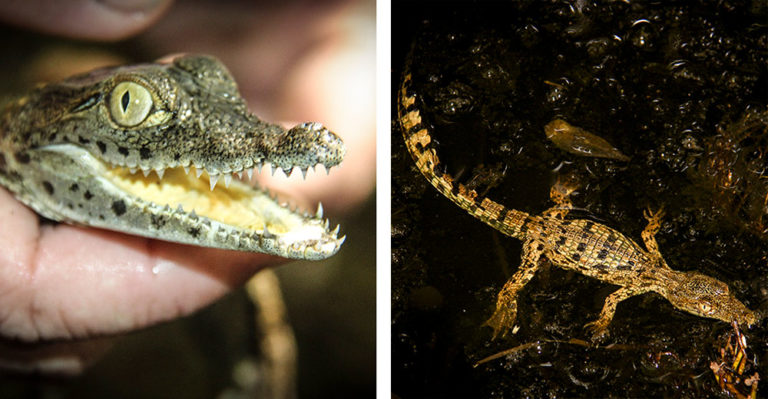Sixty yearling Nile crocodiles were released into the kuNkazana Stream on the Eastern shore section of the iSimangaliso Wetland Park World Heritage Site this week.
The iSimangaliso Wetland Park is located along the coast of KwaZulu-Natal and is 358,534 hectares. It’s home to three major lake systems that interlink eight ecosystems and most of the country’s remaining swamp forest, making it Africa’s largest estuarine system. It also houses the largest group of hippo and crocodiles in the country. The park was named a UNESCO World Heritage Site in December 1999.
The new Nile crocodiles have joined an estimated 1,000 adult crocodiles that are already living in the park, and which are mostly found in the Lake St Lucia estuarine system.

Mpume Ngcobo, Ezemvelo KZN Wildlife Conservation Manager of the St Lucia Crocodile Education Centre.
The young crocs measure at 30cm in length and were born nearly a year go to crocodiles in captivity at the St Lucia Crocodile Education Centre.
Established in 1979, the education centre functions as a tourist educational facility that contributes towards the conservation of these reptiles.

The young crocodiles released into the iSimangaliso Wetland Park.
Nile crocodiles are the apex predators of the park and the largest freshwater predators in Africa. Although a only a small number of the yearlings will survive through to adulthood, iSimangaliso says that the park is still home to one of the biggest populations in Southern Africa.
‘In a recent aerial count, the density of the basking crocodiles in one section was recorded as the equivalent of 99 individuals per kilometre.’
Crocodiles are continuously threatened by various factors, from habitat removal and the destruction of nesting sites, to illegal killings and other forms of human disturbance. They are placed as one of the country’s ‘Threatened or Protected Species’.
Ezemvelo KZN Wildlife Conservation Manager at the St Lucia Crocodile Education Centre, Mpume Ngcobo, explains that some of the hatchlings could live for up to a century.
‘Those of the released hatchlings that survive to adulthood could reach up to five metres in length, eventually weigh over 500kg and survive as long as 100 years,’ Ngcobo says.
Ecologist Dr Xander Combrink produced groundbreaking findings and carried out studies on crocodiles that helped to further peoples’ understanding of the species. In one of the studies, a crocodile that was tagged and removed from the lower reaches of Lake St.Lucia and released into the False Bay section, returned back ‘home’ after weeks of determined navigating.
‘There is so much yet to be learned about these prehistoric creatures – further highlighting the importance of iSimangaliso’s conservation status and ongoing efforts.’
Pictures: iSimangaliso Wetland Park
You may also like
Related Posts
Jock Safari Lodge has formed an official long term partnership with the Wilderness Foundation Africa...
read more
All activities including hiking, mountain biking and picnics are temporarily suspended on Table Mountain due...
read more
Unlike carnivores that get their sodium from the meat they consume, herbivores have to seek...
read more